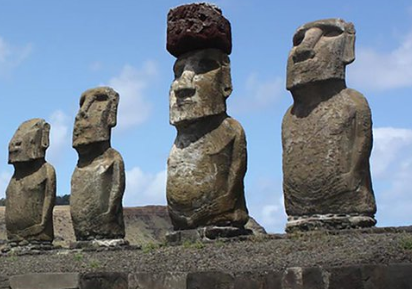Recent research has debunked the long-held belief that Easter Island’s population collapsed due to ecological mismanagement. A study published in Science Advances shows that the island, known as Rapa Nui, sustained a stable population of around 3,000 people for centuries, thanks to innovative agricultural techniques, despite limited natural resources.
Two recent studies have cast doubt on a popular theory that the ancient residents of Easter Island suffered a societal collapse because they overexploited their natural resources, an event often labelled one of history’s first “ecocides”https://t.co/Ru3GutmQXL
— RTÉ News (@rtenews) September 11, 2024
For decades, historians believed that the ancient people of Easter Island caused their own downfall by overusing their resources, notably cutting down all the trees to build the island’s famous moai statues. This was thought to have led to an environmental collapse, reducing the population to a mere few thousand by the time Europeans arrived in 1722. However, this new research challenges that narrative, revealing that Rapa Nui’s population never exceeded a few thousand due to the island’s ecological constraints.
Researchers from Binghamton University used modern technology to assess the number of rock gardens and the island’s pre-contact food production capabilities. These gardens, which used rock mulch to enhance soil fertility, were vital to supporting the population. Led by Professor Carl Lipo, along with Robert J. DiNapoli and Dylan S. Davis, the team found that the islanders employed labor-intensive techniques like composting and rock mulching to cultivate crops like sweet potatoes, taro, and yams.
The volcanic soil on Rapa Nui was not naturally fertile, and the ocean’s salt spray further degraded its quality. Islanders responded with rock mulch agriculture, breaking down rocks and adding them to the soil, which improved nutrient retention and protected it from further erosion. This method, used in other parts of the world such as by the Maori in New Zealand, helped them maintain a stable food supply despite the harsh environmental conditions.
Previous estimates based on satellite imagery miscalculated the number of rock gardens, confusing them with roads. By using shortwave infrared (SWIR) satellite imagery and machine learning, researchers were able to differentiate between mineral compositions and moisture, leading to a more accurate estimate. They found that only about 180 acres of the island were used for these intensive gardens, far less than previously believed.
Rare Archaeological Finds: The Most Important Discoveries in History
Hidden beneath ancient soil and ruins are relics that have fascinated historians for centuries.
From the giant stone statues of Easter Island to the detailed lines etched into the Peruvian desert, these rare… pic.twitter.com/EWaokl6cJ0
— Rough History (@RoughHistory) September 10, 2024
Based on the size of these gardens and other archaeological evidence, the team concluded that Rapa Nui could only support about 3,000 people, aligning with the earliest European accounts of the island’s population. This new data suggests that the islanders modified their environment in sustainable ways to make the most of limited resources, rather than driving themselves to collapse.
The study challenges the popular “ecocide” narrative, which has used Easter Island as a cautionary tale of environmental destruction. Instead, it presents Rapa Nui as an example of human ingenuity and resilience in the face of ecological constraints.
Key Points:
i. A new study debunks the theory that Easter Island’s population collapsed due to ecological mismanagement, showing the island supported a stable population of around 3,000 people.
ii. The ancient inhabitants of Rapa Nui employed innovative farming techniques, including rock mulch agriculture, to enhance soil fertility despite the island’s harsh environment.
iii. Previous satellite imagery miscalculated the extent of rock gardens; modern technology revealed about 180 acres were used for intensive agriculture.
iv. The island’s ecological limitations meant the population never exceeded a few thousand, aligning with early European reports from 1722.
v. The research challenges the long-held “ecocide” myth, presenting Easter Island as an example of sustainable adaptation to environmental constraints.
RM Tomi – Reprinted with permission of Whatfinger News

